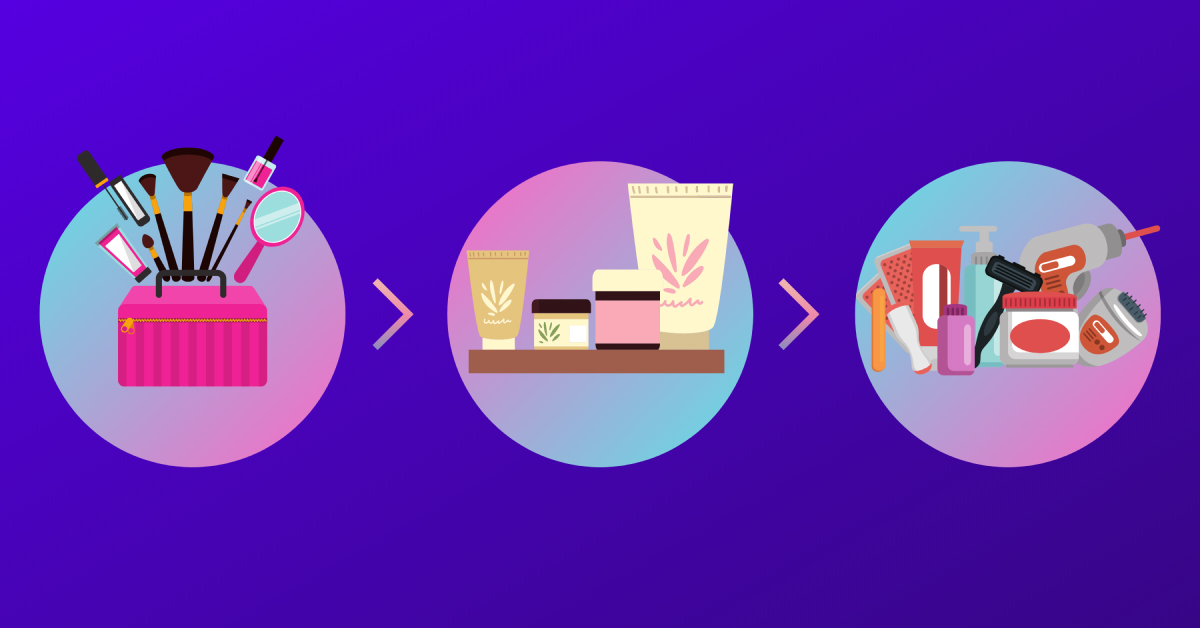Be honest... When was the last time you shopped online?
Most likely, you've shopped twice or more over the past couple of weeks.
And chances are, the ecommerce businesses you patronize are Shopify stores.
Because Shopify is undoubtedly one of the top players in ecommerce today. Over one million merchants are on the platform. In 2021, Shopify has $7.52 billion in cash. That's more than what they had in 2020, which is $6.39 billion.
And it's only going to grow more.
Shopify is sophisticated enough to satisfy the needs of experienced retailers. At the same time, it's simple enough for ecommerce beginners to quickly launch their online business idea.
But stop right there.
Creating your Shopify store is the easy part. But the hard part?
Ecommerce business has a low barrier to entry. That means there's plenty of competition to deal with. It's often difficult to stand out of the crowd and start generating sales.
Difficult, yes. But not impossible!
Want to know guaranteed tips on how to grow your Shopify ecommerce store in 2024? Keep reading!
9 Guaranteed Tips On How To Grow Your Shopify Store

1. Sell More Products
Simple enough, right? Yet this is an extremely powerful tip.
You should offer a wider range of products. You can attract a wider range of potential customers that way. Hence, you make more sales.
But where do you start?
Start with your main product. It should be something unique. It should also be solving your problem, or selling well worldwide. Once you gain traction, figure out which complementary products you can offer along with it.
You can get ideas by checking out the top sellers in your category. Check out the big sites such as Amazon, eBay, or AliExpress.
Here's the point... Carefully research and test your options out. Make sure your product range is flexible enough. But with everything you offer stay highly relevant to your brand.
Need an example? Imagine yourself selling beauty products. You can organically add skincare products. Obviously, they appeal to the same kind of customer.
After some time, you can branch out into hair products and fashion accessories such as earrings and necklaces.

This is called the long-tail strategy. Amazon is the most famous example of how to succeed with it.
Did you know that this ecommerce giant started out in the book's niche? Now it retails just about everything.
Once you have customers rolling in, you need to...
2. Focus On Retaining Your Existing Customers
Here are a couple of statistics you need to know:
- 65% of sales come from previous customers.
- Improving customer retention by just 5% can increase profitability by up to 95%.
It then makes sense to spend more time retaining your existing customers, right?
For instance, your Shopify store is losing existing customers. Then you'd need to reel in more new customers in order to cover the gap and maintain your revenue levels.
And yet, attracting new ones requires way more hard work than retaining existing ones. The truth is, you are more likely to buy from a store you have shopped before than you are to try out a new one. You do this even in the brick-and-mortar world!
So how do you improve your customer retention?
Consistent communication is one of the most effective ways to grow your business. Send out regular emails to keep them engaged. So engaged, that your ecommerce store is the first thing in their mind as soon as they think of shopping online.
Your emails can be...
- Store alerts like new product notifications and special sale offers
- Personal messages such as birthday wishes and holiday greetings
- Loyalty offers such as repeat buyer discounts and referral coupons
- Helpful tips like curated product reviews and advice blog posts

But remember...
Communication can't be a one-way street. You can't just ignore your customers. So, you should be very responsive to their questions and/or complaints. They can send them to you through email or social media.
Plus, try to go above and beyond in personalizing your packaging for every single customer. How so? You can send unique, funny, or quirky handwritten notes with each order.
After all, a little thoughtfulness goes a long way! Especially in ecommerce, where face-to-face interaction is impossible.
Another type of email marketing strategy you shouldn't ignore is...
3. Create A Compelling Cart Abandonment Email
Here's another crucial point to streamlining your customer retention and sales recovery strategy. It's automating emails to shoppers who left your store after filling up a cart.
The best part? It's an almost entirely hands-off marketing tactic that delivers remarkable results.
Yes, roughly 70% of online shopping carts are abandoned before the customer completes a sale. But here's the good news...
Nearly half of all abandoned cart emails are opened. And over a third of clicks lead to purchases back on site.
This is especially true if your reminder email comes with a discount coupon. To give you a better idea, your customer may simply have gotten distracted. A cart abandonment email can help build brand loyalty. Show them how much you care about them completing their purchase.
I'll tell you another instance. Your customer is a bargain hunter. Discount coupons or even free shipping make completing their purchase much more attractive.
So before you send out our abandoned cart email, there are a few vital elements you should include:

- A Clear Call To Action (CTA) That Leads Them Back To Exactly Where They Stopped. Your CTA should be prominent and compelling. Include a direct link or generate a QR code to your checkout page so they can complete their purchase right away.
- A Catchy, Compelling Subject Line What Stands Out In A Crowded Inbox. Include your customer's name. As well as a clear hint of the special offer. You can write something akin to "Karen, your items are still waiting. Complete your order now and get 10% off!"
- Great Copy That Gets The Customer Fired Up Again About Their Abandoned Cart. Remind them why they liked the items enough to put them in the cart. You can also include the discount you have to offer them. As well as high-quality images of what they chose.
- An Opportunity For Feedback On Why They Abandoned The Sale In The First Place. You can uncover technical issues in your checkout process you may be unaware of. Or even highlight issues with your pricing.
Next, you can also...
4. Embrace Social Media Influencer Marketing
Over the past few years, influencers have become one of the most popular forms of marketing. And it's still going strong in 2022!
And the key to influencer marketing? Identify influencers who engage audiences that represent your target market. They should also share the same values with your ecommerce brand.
Ask them some questions, too. Who have they previously worked with? What is the proof of the results they managed to achieve with them?
So how do you bring out the best in this strategy? This requires creativity. Or else, it can come off as tacky and too obvious. You can incorporate interactive content such as quizzes, contests, and challenges.
Get familiar with other types of marketing and...
5. Sharpen Your Content Marketing With Storytelling

Keep in mind that the purpose of content marketing is not to explicitly promote your Shopify store. Rather, it's to generate interest in your brand as a problem solver and position it as a thought leader.
Do you know what's old-school but still reliable content marketing? Well-written, SEO-friendly blog posts.
But coming in 2022, videos and products are very important to supplement text-based content.
For your content, infographics are also quite popular. It blends both visual and text elements in one format.
High-quality content marketing isn't just about the products you sell. It's about figuring out how to add value to your customer experience at different stages in their journey.
To illustrate, you sell swimwear. You could publish an article or produce a video about the best beaches to visit in the world.
But whatever format you choose, make sure that your content...
- Is relevant to your target audience's interests such that they are inspired to share it.
- Shows how your product can help solve their problems.
Furthermore, all your content marketing efforts should be infused with the power of storytelling.
You see, consumers seek personal connections with the brands they buy from. Plus, the human brain is a lot more engaged with storytelling than with facts and numbers.
In short, people want to buy from someone they know and trust. Understand that with ecommerce, there is an absence of physical interaction. Telling a story is the best way to achieve their trust in the ecommerce business.
Lastly, prepare a content calendar. This will ensure consistency. And without consistency, you will lose your audience. Produce fresh content twice or thrice a week to raise search engine ranking.
Speaking of search engine ranking...
6. Optimize Your Shopify Store To Appear Higher In Searches
This goes without saying... Search Engine Optimization is a crucial part of your marketing strategy!
This is true for any kind of website, too. You might have built some good back-linking. Maybe you even did keyword research tools like Ahrefs and revisited your site. You change headings, product and category names, page copy... and even adopt a flat site architecture.
Just remember, SEO is not a one-time thing.
Your customer may search for the most highly rated Shopify store, according to TrustPilot. You may then end up lower in results with these new shades in searches. So, make sure that all this data is added to your sitemap.
The same goes for things like product availability and even standard certifications.
These are the extra bits of information that let all those other sites still beat you to the top page.
The point is, it's a continuous game. And you have to keep optimizing with each new product listing!
Voice search and visual search are steadily taking off. Alexa, Siri, Cortana, and Google Assistant can hear you everywhere. Make sure you optimize your store for them, too.
More and more people start searching for the kind of products you sell through mobile. So make sure that your store is mobile-friendly and responsive.
Always take time off to do some little research. Focus on new ecommerce trends and behavior in the way people shop online. Update your ecommerce SEO efforts so you don't get left behind.
Another way to not get left behind is to...
7. Partner With Established Brands
You are a new and still growing ecommerce site. It can be very helpful to be associated with already successful brands.
And there are a number of ways you can go about this.
One is to look for other websites that are authorities in fields related to your products. It could be a site that curates lists of the best health supplements, for example.
Reach out to them. Let them know that you have some of the products they talk about, listed in your online store. Find out if they can mention you as a place to source those products.
Another common option is to look for the manufacturers themselves. If they display a list of authorized/trusted retailers, ask about the requirements to get on that list.
When necessary, share the performance of their products on your store and any other related reviews from buyers.
If you have a unique selling point, make it known! For example, having a physical store in a region they are trying to penetrate.
Finally, it may also be that you have a suitable arrangement with a storage and shipping service provider. They can supply your area better than other stores.
You won't just receive traffic from their store. Most likely, your traffic will be made up of people who are interested in your product AND want to buy.
If you want, you can also...
8. Run A Referral Program

There's one thing that can make your Shopify marketing strategy incomplete.
It's your customers.
Like most physical businesses, customers are more likely to buy from stores that others recommend.
A referral program is a suitable word-of-mouth equivalent for Shopify online stores. It does take on many different forms. So it's better to organize and incorporate it into your ecommerce site.
Your starting point? Offer a wonderful customer experience on your Shopify store. People aren't going to talk about you if they had a horrible time shopping in your store. Unless it's to complain, which isn't good for you, either.
Make sure that the customers you're attracting are satisfied. Your next step is to do some more research. This is particularly to find out what customers consider to be a good reward or incentive.
The third step is to promote it in every possible way. When it comes to getting eyes on it, think beyond your store's website. A good place to start is to order confirmation emails.
With emails, you are more likely to be dealing with someone who likes you on some level. Or at least enough to buy.
Get it on your social media pages, too.
There are also referral tools you can use to analyze your progress. These include ReferralCandy, TapMango, Ambassador, Referral Rock, and Rocket Referrals.
Last but not least...
9. Add Social Proof To Your Shopify Marketing Plan
Your Shopify store won't grow just because people know that it exists. Just think about the number of ads you see. You probably can't because you forgot most of them in just a second.
Once people know that you're out there, they want to know what others think about you. Most probably, they also won't do that work for you.
So, set up a two-pronged approach to this. Collect reviews, and testimonials, and get rated both on and off your site. You can download Debutify Reviews and avail of the 30-day FREE trial to get started.
Remember that people saying good things about you isn't enough either. Some people see this all the time and want more details. They also want to know how many people participated in rating you. Or whether there were questions involved.
Some shoppers also trust particular sites when it comes to reviews.
Set aside a small budget to get more people to review your products. This can take the form of free products to review communities. It may also be in the form of discounts on future purchases for those who already bought from your store.
Once you rack up lots of reviews, proudly display them properly across different pages of your ecommerce site.
These are the 9 surefire tips for your ecommerce store to...
Grow As You Go!
Follow the above practical tips, and you can grow your store to the next level.
All in all, it takes hard work and dedication to succeed in ecommerce.
So don't slow down your roll and be patient!
That may be easy to say, but I know how frustrating it is when you apply some of the tips...
And you're not seeing any improvements.
Here comes Debutify to your rescue.
And it's not just your regular, boring Shopify theme. Debutify offers over 50+ Add Ons. It's all there to help you achieve your goals... and grow with you!
It's also your best Profit Optimization Partner. Not only will it make your store visually pleasing... It also improves your conversions, AOV, and profits.
Don't let your ecommerce business stagger, so...
Grow Your Shopify Store With Debutify Theme NOW!
14-Day Free Trial. 1-Click Installation. No Credit Card is Needed.



